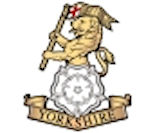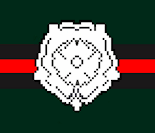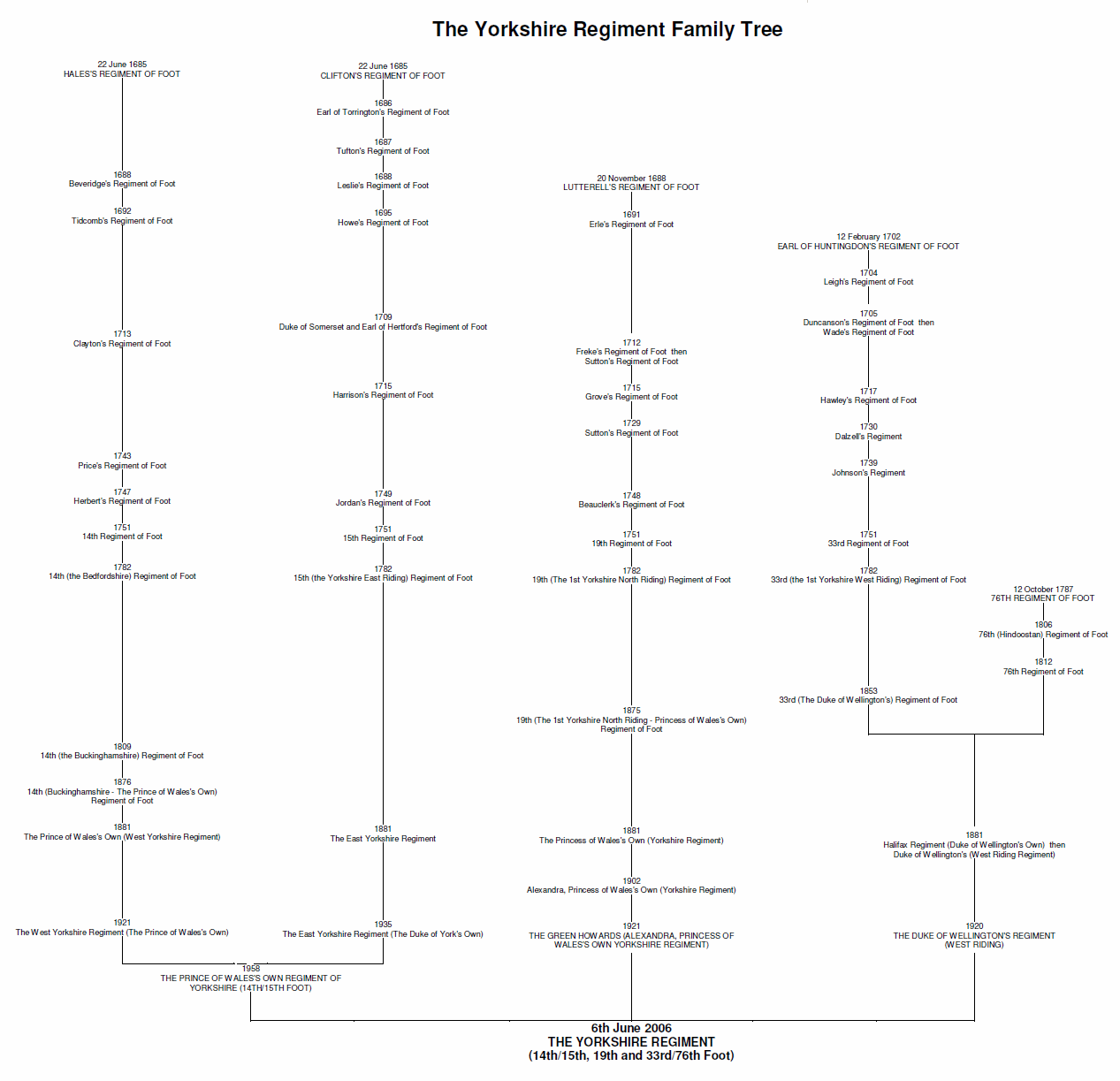The Yorkshire Regiment
  |
Battalions |
The Yorkshire Regiment's home is Yorkshire and the area up to the historic boundary of the River Tees. The Regiment formed on Tuesday 6 June 2006 from the three Yorkshire Infantry Regiments; The Prince of Wales's Own Regiment of Yorkshire (14th/15th Foot); The Green Howards (Alexandra, Princess of Wales's Own Yorkshire Regiment)(19th Foot) and The Duke of Wellington's Regiment (West Riding)(33rd/76th Foot) plus their affiliated Territorial Army units.
The 1st Battalion formed at Somme Barracks, Catterick; the 2nd Battalion at Banja Luka, Bosnia-Herzegovina; the 3rd Battalion in Battlesbury Barracks, Warminster, and the 4th Battalion at their eleven Territorial Army Centres (TACs) around Yorkshire and Middlesbrough. On Saturday 10 June 2006, the TA and Cadet Forces carried out rebadging parades. The 4th Battalion conducted their parade in the Museum Gardens and the three Army Cadet Forces and Combined Cadet Forces contingents paraded at Imphal Barracks in York.
During the Regiment's first eighteen months, the 1st Battalion served in Iraq on Operation TELIC 9 (September 2006-March 2007) and the 2nd Battalion in Afghanistan on Operation HERRICK 7 (September 2007-March 2008). Soldiers from both the 3rd Battalion and 4th Battalion have served in both theatres with the 3rd Battalion deploying to Afghanistan in 2009 as part of the MASTIFF Group an as Battlefield Casualty Replacements.
The most recent unit deployments to Afghanistan have been by the 1st Battalion on Operation HERRICK 15 (November 2011-April 2012) and 3rd Battalion on Operation HERRICK 16 (February to September 2012). The 2nd Battalion is theatre reserve for these operations and the 4th Battalion has mobilised personnel to support both the 1st Battalion and 3rd Battalions in an unprecedented year of operational deployments for the Regiment.
The first time the regiment started a permanent connection with Yorkshire was in the mid 17th century and this was finally set in stone in the late 19th century. Since that time Yorkshiremen, by birth and in spirit, have served throughout the world supported by their friends and families.
Collectively, these historic Yorkshire Regiments trace their history back to 1685, the year James Stuart Duke of York, became King James II. The Prince of Wales's Own Regiment of Yorkshire, The West Yorkshire Regiment, was raised by King James II at the time of Monmouth's rebellion in 1685, but before its formation was completed, the battle of Sedgemoor had disposed of that unfortunate leader, and it was under King William III that the regiment proceeded on its first active service, to take part in the campaigns of that monarch against Louis XIV of France. It was present at the battle of Landen, in 1693, and at the capture of Namur, in 1695, King William's greatest military achievement.
At Corunna, in 1809, the regiment made a gallant and successful charge for which it was specially commended by Sir John Hope, who succeeded to the command of the Army on the death of Sir John Moore. Battalions of the regiment were engaged in the capture of the Mauritius in 1810, and Java in 1811, their services at the latter island being commemorated on the colours. In this latter island the regiment was shortly afterwards called upon to storm a fortified palace of a ruler called the Sultan of Mataran. Although garrisoned by 17,000 trained troops, assisted by thousands more of armed peasants, a small British force of 1,500 men quickly forced their way into the fortress, drove out its defenders and captured the Sultan. The next action which the colours of the regiment commemorate was the ever famous battle of Waterloo. The battalion of the regiment engaged had but recently been recruited, and owing to the youthful appearance of the men it was at first intended to leave it in garrison at Antwerp, but the glorious past of the regiment pleaded for it, and it was included in the army which faced Napoleon at Waterloo.
Meanwhile, another battalion of the regiment was winning laurels in India. In 1815, it was engaged against the Ghoorkhas in the second Nepaul war; in 1817, against the Rajah of Ha trass, whose robber stronghold was captured and destroyed, and his force of 8,000 men defeated and dispersed. In 1826, an operation of greater magnitude awaited it. Bhurtpore, the great Jat fortress which had, 20 years before, successfully repulsed the British under Lord Lake, with a loss of 3,000 officers and men, was assaulted and taken, and in recognition of the distinguished gallantry it had displayed in leading the assault, the West Yorkshire Regiment was placed in garrison there by the Governor-General of India, and in 1838, to commemorate more particularly the splendid services of the regiment, it was granted the badge of "The Tiger " and the word " India," while " Bhurtpore " was added to the list of victories on the colours.
In 1855, the regiment was serving in the trenches before Sebastopol, in 1861-3, against the Maories in New Zealand, and in Afghanistan in 1880, where, according to the official despatches, at Mazina, the young soldiers of the regiment satisfactorily maintained the fighting traditions of the "Old and Bold," by behaving in action with great steadiness, coolness and gallantry. "Sevastopol," " New Zealand," and "Afghanistan, 1879-80," on the colours form a lasting memorial of these three campaigns.
In 1876, the Prince of Wales presented new colours to the battalion of the regiment at Lucknow, and, as a testimony to its valiant deeds in the past, the regiment was honoured with the title of " The Prince of Wales's Own."
No campaign more clearly demonstrated the value of the militia and volunteers than that in South Africa. The West Yorkshire Militia had volunteered for service before, and the word " Mediterranean" on its colours testified to its response to its country's call during the Crimean war, but its value on active service had yet to be proved. The Boer War settled the question for once and all.
The East Yorkshire Regiment was one of the regiments which King James II caused to be formed at the time of Monmouth's rebellion in 1685, and was first armed part with muskets and part with pikes; the latter were, however, abandoned during the campaigns of Marlborough, when the superiority of the firearm became evident. The regiment was first called into the field in 1689, when it proceeded to Scotland, and was for some years engaged, often amid circumstances of much hardship, in establishing the authority of King William III among the Highland clans. In 1694, it was ordered to proceed to Flanders to take part in the contest which William III was waging against Louia XIV of France, and was there engaged with varying fortune until the treaty of Ryswick set a limit to the ambitious designs of the French monarch. The peace was, however, of short duration, and in 1701, the colours of the regiment were again displayed against the French.

|
NEWSLETTER
|
| Join the GlobalSecurity.org mailing list |
|
|
|

